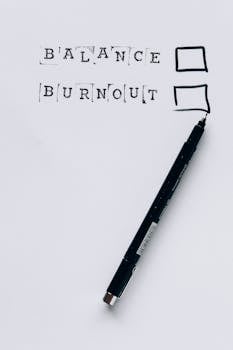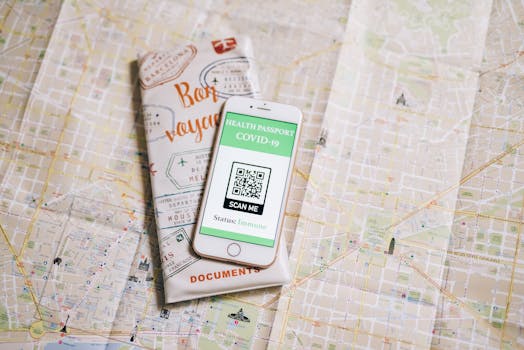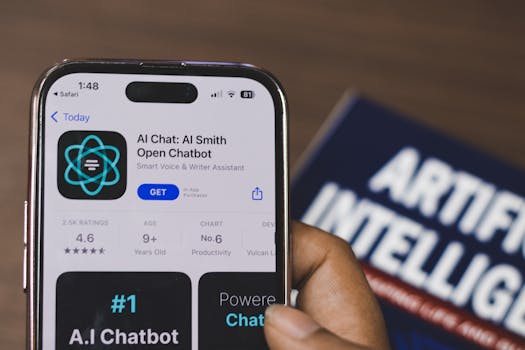Career
Job interview: the most common questions and how to answer them
Discover how to answer the most common job interview questions with confidence. Use templates, real examples, and actionable steps for each interview stage to impress every hiring manager.
Advertisement
Nerves and excitement build up as you step into a job interview. Most people worry about job interview questions popping up unexpectedly, making preparation crucial for success.
Employers aim to evaluate fit, skills, and values through structured conversations—so knowing common job interview questions and strong responses lets you focus more on connection than surprise.
Ready to stand out, express yourself genuinely, and leave a positive impression? Let’s clarify exactly what interviewers seek and map out practical ways to answer job interview questions with confidence.
Spot Patterns in Job Interview Questions and Break Down Expectations
When you recognize predictable themes among job interview questions, you boost your readiness to navigate them directly and build clear, concise answers that satisfy interviewers.
Preparation transforms awkward silences into smooth exchanges, letting you actively demonstrate your insight into cultural fit and problem-solving abilities from the first moment.
Recognizing Common Behavioral Patterns
Job interview questions targeting behavior look for proof you’ve handled real challenges. For example, “Describe a time you resolved a team conflict” calls for a specific story.
Use the STAR method: Situation, Task, Action, Result. Anchor your reply in a real scenario to show experience, instead of hypothetical answers that lack depth and credibility.
Maintain natural eye contact, lean forward slightly, and smile as you relate your story. Body language can subtly reinforce the confidence and honesty behind your answer.
Identifying Technical and Role-Specific Patterns
Job interview questions in technical roles assess practical knowledge. For instance, “How would you debug a software error?” needs step-by-step logic and clarity in communication.
Explain what tools or resources you’d use, highlight your collaborative approach, and mention how you document solutions. This ties technical skill to process and team orientation.
Pausing before answering shows you’re thoughtful. Saying, “Let me walk you through my approach,” then listing steps directly creates a framework for interviewers to follow.
| Question Type | Signal | Strong Response Example | Takeaway |
|---|---|---|---|
| Behavioral | Teamwork | “When our deadline slipped, I held a team sync, delegated, and we finished on time.” | Use real outcomes: what happened, who benefited. |
| Situational | Problem-solving | “I’d analyze root causes, propose fixes, and gather feedback before acting.” | Show logical flow, not just the endpoint. |
| Technical | Expertise | “I used SQL queries to track and resolve bottlenecks in data flow.” | Link your actions to measurable results. |
| Motivational | Values/Drive | “I thrive where learning new skills is encouraged—growth excites me.” | Match your motivation to the company culture. |
| Culture Fit | Work Style | “I seek feedback, ask clarifying questions, and prioritize transparency.” | Insert company values from their website. |
Prepare For “Tell Me About Yourself” and Showcase Unique Value
Kicking off with “Tell me about yourself,” interviewers want you to set the tone, summarize relevant highlights, and reveal your motivation to grow within the company.
A concise, present–past–future script focuses on your current role, relevant accomplishments, and personal career goals. This answer helps direct follow-up job interview questions smoothly.
Avoid Overtalking and Disorganized Stories
Stick to 60 seconds. For example: “I work in logistics, optimized routes that cut delivery times by 18%, and now seek a team focused on innovation.”
Keep eye contact and gesture naturally. If unsure, practice with a timer to keep your answer sharp and authentic, not memorized. This clarity calms nerves.
- Highlight your current role first, making sure job interview questions flow naturally after your introduction, not forcing resumes into conversation.
- Reference an accomplishment using numbers. This shows direct value—you’re specific about how you contributed, not just that you participated.
- Share a curiosity or goal about the company that relates to their priorities, which you learned from their website or news. This builds instant rapport.
- Practice bridging from the past to what motivates you now. Include a phrase like, “That’s what drew me to your team.”
- Finish with an open attitude, inviting further job interview questions to build a positive dynamic.
Knowing where to pause and when to stop signals poise. The interviewer controls the next job interview question—never talk over them or finish on a trailing note.
Introduce Yourself Confidently
Your opening should feel like a confident elevator pitch: short, relevant, and focused on credibility. Set the tone that you’re ready for advanced job interview questions.
Reference company values. For example, “I value teamwork and noticed your recent collaboration with nonprofits—that aligns with my involvement in local volunteering.”
- Acknowledge shared priorities in your introduction to strengthen initial connections and suggest future alignment without overpromising.
- Keep sentences clear and avoid jargon, so hiring managers understand your expertise.
- Signal active listening right away by pausing after your intro for their next move.
- Invite a response: “I’d love to share how my logistics work fits your current needs.”
- Smile naturally, showing engagement and warmth.
Mastering this sequence sets you up for deeper job interview questions, making the conversation feel collaborative from the start.
Give Compelling Answers About Strengths, Weaknesses, and Self-Knowledge
Many classic job interview questions dig into strengths and weaknesses. Clear, sincere examples earn trust while avoiding generic or bland responses that fade from memory.
Strong answers demonstrate maturity, growth, and reflection, which are things interviewers mark as essential for long-term success and adaptation in new teams.
Give a Realistic Strength With Proof
Pick a strength connected to the role, such as, “I adapt quickly in shifting environments, like when we pivoted sales strategies mid-quarter to double conversions.”
Briefly describe the context and result. This paints a picture that’s easy to remember, not just a checklist answer to job interview questions about skills.
Mention supporting feedback. “My manager noted my flexibility, especially when timelines changed.” Specifics matter more than adjectives.
Share Growth-Focused Weaknesses
Pick a real weakness not critical to the position. “Earlier, I hesitated asking for feedback. Over the past year, I’ve scheduled regular check-ins to get direct input.”
This example shows self-awareness and growth. Don’t say “perfectionism” without context—describe actions, not just traits, for job interview questions on improvement.
Wrap up with how you now address this weakness daily, such as setting reminders to ask for feedback after meetings or noting progress in a work journal.
Lay Out Accomplishments and Integrate Data Into Answers
Interviewers remember candidates linking achievements to quantitative results. When job interview questions request examples, add numbers to prove your point, rather than vague terms like “improved” or “helped.”
Numbers anchor stories, so they stay with interviewers and offer an easy comparison against other applicants later in their process.
Detail Tangible Results for Common Questions
For example: “I led a project reducing ticket response time from 24 to 12 hours by redesigning workflow, which increased customer satisfaction ratings by 15%.”
Reference timelines to add structure: “Over three months, we iterated the process, gathering user feedback every two weeks to ensure we stayed on track.”
Rehearse delivery so you can state results directly and naturally, turning job interview questions into launchpads for memorable stories.
Define Metrics That Matter in Each Role
For sales, mention revenue growth, deal size, or conversion rates. For support, cite resolution speed and satisfaction scores. Align achievements to common industry benchmarks to boost credibility.
Comparing past metrics to company baselines can impress. “Our NPS score rose to 60, well above the industry average of 38—this reflected new initiatives I led.”
This practice makes it easy to tailor data in job interview questions about achievements, raising your profile as someone who understands what organizations value.
Narrow Down Challenging Scenarios and Highlight Real Problem-Solving
Challenging scenario job interview questions dig into resourcefulness and emotional intelligence. Real examples offer a chance to show not just skill, but poise and process under pressure.
Describe how you faced constraints—tight deadlines, budget cuts, or communication breakdowns—then focus on the inventive responses these moments inspired.
Roleplay: Handling Difficult Customer Requests
If asked how you dealt with a tough client, paint the scenario clearly: “A customer’s system failed two days before launch, risking a major account.”
Share your approach: “I organized a quick-response team, escalated priorities, kept the client informed, and resolved the issue within hours.”
End your answer with a practical tip: “By scheduling daily updates, we rebuilt trust, and the client recommended us to others.” Turn job interview questions into evidence of reliability.
Respond to Team Conflict and Build Consensus
Frame disagreements as opportunities. For example, “Team members clashed over resource allocations before a product demo. I facilitated a round-robin discussion, which found unexpected middle ground.”
Make the process specific: “We mapped out needs on a whiteboard, identified overlap, and scheduled follow-up meetings.”
This detail gives interviewers confidence you handle similar job interview questions with concrete process and people skills—not empty reassurances.
Wrap Up With Questions That Demonstrate Insight and Curiosity
Closing job interview questions are your chance to show you’re evaluating fit for yourself. Use this moment for differentiated, company-specific questions—don’t ask about salary or benefits now.
Prioritize inquiries that underline your desire to contribute and grow, not just join a team. This leaves a final positive impression and continues the authentic conversation.
Pose Engaged, Informed Questions at the Interview’s End
Ask about upcoming projects. For instance, “I saw you’re piloting a new service area—what skills are you looking for in that rollout?”
Request feedback about team culture: “What do top performers here do differently during their first 90 days?”
Relate your question to the interview itself: “Based on our conversation, is there anything about my background I should clarify further?” End job interview questions with openness, not assumptions.
Building Momentum for Interview Success in Every Encounter
Every job interview is an opportunity to demonstrate not only knowledge and skills, but also self-awareness and genuine motivation for growth.
Each answer to job interview questions can clarify your value, align with company needs, and show your personal brand’s authenticity. Consistency leads to lasting impressions for hiring managers.
Start practicing now—review job interview questions, rehearse focused examples, and bring curiosity into every conversation. Each step gets easier, turning interviews into opportunities to advance your story.




